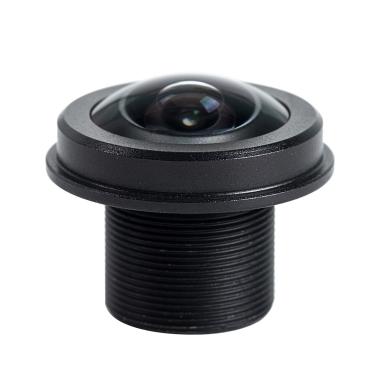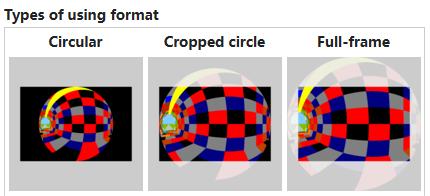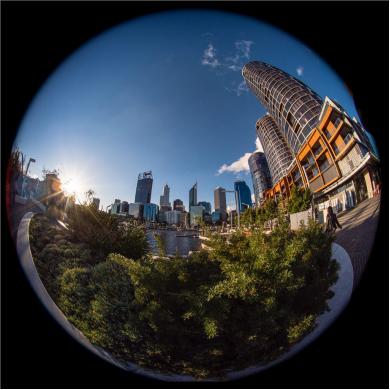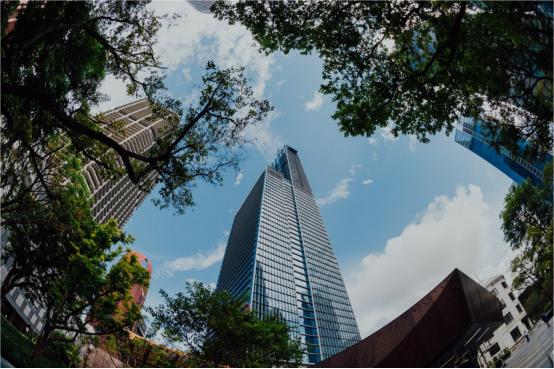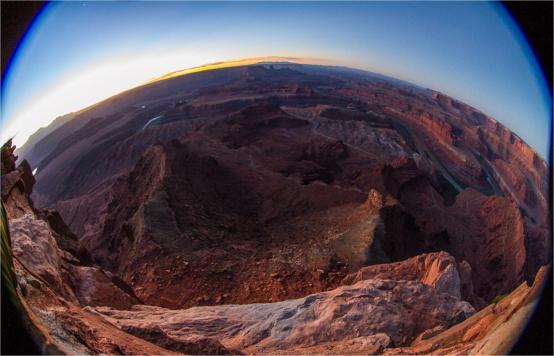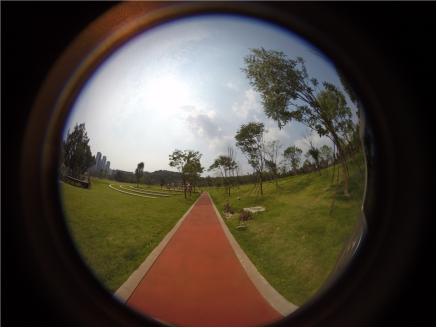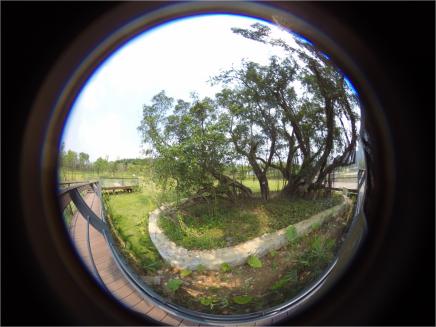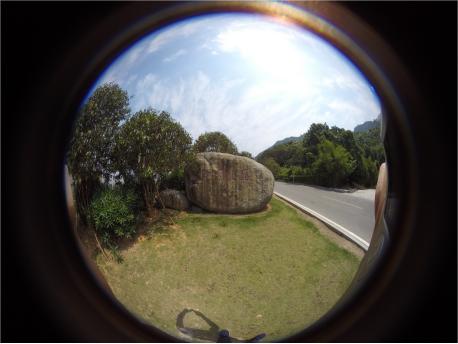What is a Fisheye Lens?A fisheye lens is a type of camera lens that is designed to create a wide-angle view of a scene, with a very strong and distinctive visual distortion. Fisheye lenses can capture an extremely wide field of view, often up to 180 degrees or more, which allows the photographer to capture a very large area of the scene in a single shot.
The fisheye lens
Fisheye lenses are named after their unique distortion effect, which creates a circular or barrel-shaped image that can be quite exaggerated and stylized. The distortion effect is caused by the way that the lens refracts light as it passes through the curved glass elements of the lens. This effect can be used creatively by photographers to create unique and dynamic images, but it can also be a limitation if a more natural-looking image is desired.
Fisheye lenses come in several different varieties, including circular fisheye lenses, cropped-circle fisheye lenses, and full-frame fisheye lenses. Each of these types of fisheye lenses has its own unique characteristics and is suitable for different types of photography.
Unlike rectilinear lenses, fisheye lenses are not fully characterised by focal length and aperture alone. Angle of view, image diameter, projection type, and sensor coverage all vary independently of these.
The types of using format
Circular fisheye lenses
The first type of fisheye lenses developed were “circular” lenses that can create a circular image with a 180-degree field of view. They have a very short focal length, typically ranging from 7mm to 10mm, which enables them to capture an extremely wide-angle view of the scene.
Circle fisheye lens
Circular fisheye lenses are designed to produce a circular image on the camera’s sensor or film plane. This means that the resulting image has a circular shape with black borders surrounding the circular area, creating a unique “fishbowl” effect. The corners of a circular fisheye image will be completely black. This blackness is different from the gradual vignetting of rectilinear lenses and sets on abruptly. The circular image can be used to create interesting and creative compositions. These have a 180° vertical, horizontal and diagonal angle of view. But it can also be a limitation if the photographer wants a rectangular aspect ratio.
Circular fisheye lenses are typically used in creative and artistic photography, such as in architectural photography, abstract photography, and extreme sports photography. They can also be used for scientific and technical applications where a wide-angle view is required, such as in astronomy or microscopy.
Diagonal fisheye lenses (a.k.a. full-frame or rectangular)
As fisheye lenses gained popularity in general photography, camera companies began manufacturing fisheye lenses with an enlarged image circle to cover the entire rectangular film frame. They are called diagonal, or sometimes “rectangular” or “full-frame”, fisheyes.
Diagonal fisheye lenses are a type of fisheye lens that can create an ultra-wide-angle view of a scene with a diagonal field of view of 180 to 190 degrees,while the horizontal and vertical angles of view will be smaller. These lenses produce a highly distorted and exaggerated perspective, but unlike circular fisheye lenses, they fill the entire rectangular frame of the camera’s sensor or film plane. To obtain the same effect on digital cameras with smaller sensors, shorter focal lengths are required.
The distortion effect of a diagonal fisheye lens creates a unique and dramatic look that can be used creatively by photographers to capture dynamic and eye-catching images. The exaggerated perspective can create a sense of depth and movement in a scene, and can also be used to create abstract and surreal compositions.
Diagonal fisheye lens
Portrait or cropped-circle fisheye lenses
Cropped-circle fisheye lenses are another type of fisheye lens that exists, in addition to the circular fisheye and full-frame fisheye lenses that I mentioned earlier. An intermediate between a diagonal and a circular fisheye consists of a circular image optimised for the width of the film format rather than the height. As a result, on any non-square film format, the circular image will be cropped at the top and bottom, but still show black edges on the left and right. This format is called a “portrait” fisheye.
Cropped-circle fisheye lens
These lenses typically have a focal length of around 10-13mm and a field of view of approximately 180 degrees on a crop-sensor camera.
Cropped-circle fisheye lenses are a more affordable option compared to full-frame fisheye lenses, and they offer a unique perspective with the circular distortion effect.
Miniature fisheye lenses
Miniature digital cameras, especially when used as security cameras, often tend to have fisheye lenses to maximize coverage. Miniature fisheye lenses, such as M12 fisheye lenses and M8 fisheye lenses, are designed for small-format sensors imagers commonly used in security cameras.Popular image sensor format sizes used include 1⁄4″, 1⁄3″, and 1⁄2″. Depending on the active area of the image sensor, the same lens can form a circular image on a larger image sensor (e.g. 1⁄2″), and a full frame on a smaller one (e.g. 1⁄4″).
Sample images captured by CHANCCTV’s M12 fisheye lenses:
Sample images captured by CHANCCTV’s M12 fisheye lenses-01
Sample images captured by CHANCCTV’s M12 fisheye lenses-02
Sample images captured by CHANCCTV’s M12 fisheye lenses-03
Post time: May-17-2023

